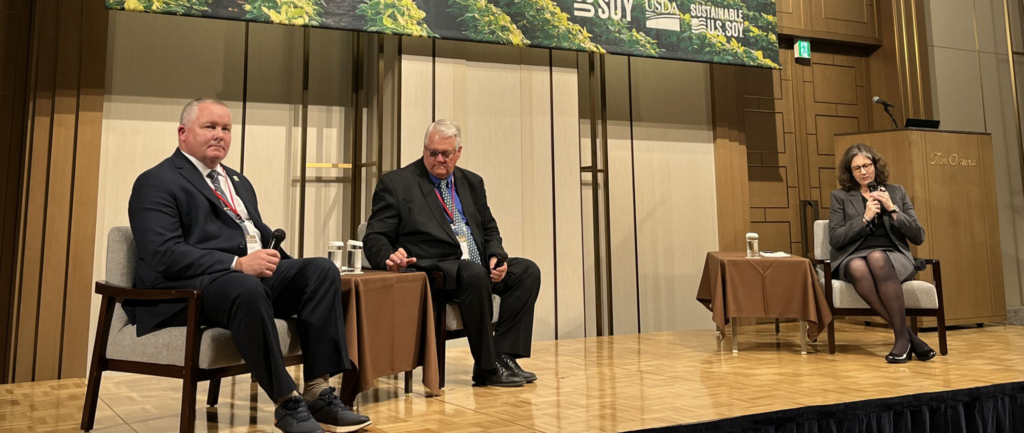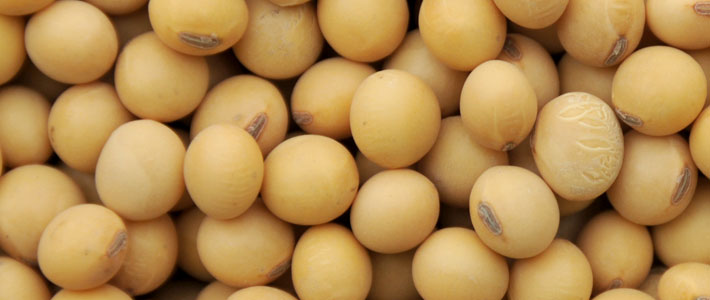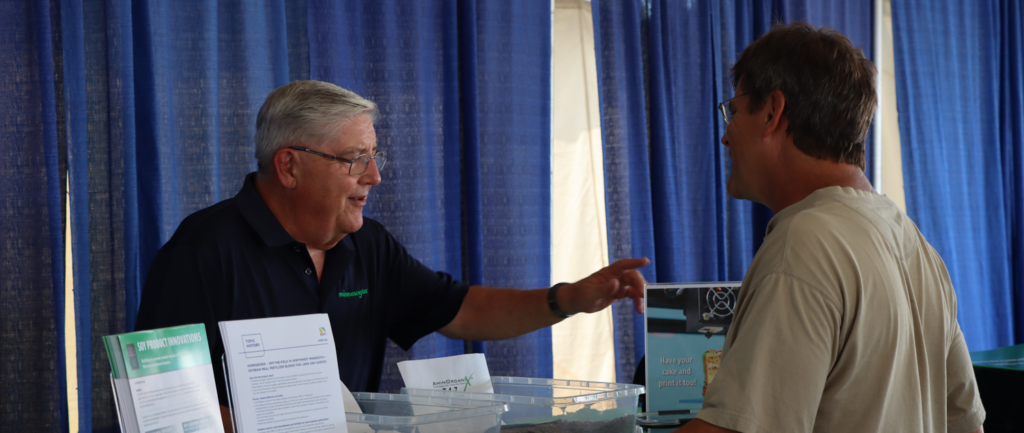A checkoff-centric Q&A with Minnesota Soybean Research & Promotion Council (MSR&PC) Director Joel Schreurs, who started his first term on July 1.
Read below to find out his thoughts on the Council’s Behind the Dollar initiative.
This interview has been edited for length and clarity.
Q: Give us a quick background on your farm.
Joel Schreurs: I farm in Lincoln County, but I also farm with my daughter, son-in-law and his grandparents in both Lincoln and Lyon County. They run a cow/calf operation that varies from about 75 to 125 cows.
Q: What region of the state do you represent on the Minnesota Soybean Research & Promotion Council? How long have you been on the board?
JS: I am in the very southwest part of the state, District 7. I’ve been on the board a week. This is my first term. I started on the Minnesota Soybean Growers Association 15 years ago and started on the county board a year prior to that. I served nine years on the American Soybean Association (ASA) board. I am in my fifth year with the U.S. Soybean Export Council in two different roles.
Q: Why did you decide to run for the Minnesota Soybean Research & Promotion Council?
JS: I termed off the ASA board, I was looking for something else that worked with my experience and the checkoff board, doing some of that promotional work, I thought my background would help their board.
Q: Why do you feel the checkoff is critical to Minnesota’s soybean farmers?
JS: It’s very critical to get more market share on the promotion side, and the other part of it is the research and education. There are fewer and fewer farmers educating the general public about production agriculture and how it works. Help them understand the concepts and what we do and how we provide safe, quality food for them.
Q: How does the board ensure checkoff dollars are invested responsibly?
JS: We go through all the programs every year and decide which ones that we believe are most beneficial to Minnesota farmers. And then we allocate funds for those programs which we allow up to the amount that we have for that year.
Q: How has directing checkoff funds raised your awareness of the soy checkoff?
JS: Before I was involved with the soybean boards, I really wasn’t aware of how the funds were utilized throughout the different programs. I didn’t know that half of it goes to Minnesota Soybean and half of it goes to the United Soybean Board and where those funds are dealt out from there. When I first started farming, I knew the soybeans go to town and that’s kind of the end of the marketing. What my job has been over the years is connecting the end user, wherever that may be in the world, back to Minnesota farmers.
I think most people want to know where their food comes from. The end user wants to put a face to that product that they’re buying, and they want to make sure that that food is safe, because in a lot of parts of the world, the food is not as safe as it is here. They just don’t have the quality control that we do.
Q: What project(s) are you most proud of that you have seen since working in Minnesota soybean leadership?
JS: Typically, you never find out how much you move the needle. Very few times will you find out. You can look at data, and it’ll show you if your sales have went up, or you’re working in the right area. But one time when this was many years ago, I worked with Sam Ziegler at Minnesota Soybean. We had a meeting with government officials, buyers from Thailand. We promoted Minnesota soybeans and U.S. soybeans. They ended up buying two boatloads of soybean meal. We would have never found this out, but they wrote us a letter and said that they bought these boatloads of soybean meal because of our meetings.
Q: Many checkoff investments are made to impact our future growers. What are some checkoff-supported projects coming down the pipeline that you’re excited about?
JS: I want to help out wherever I can. I have a large network. I’ve worked probably more in international marketing than most of the people on the board. I come with a different set of ideas and interests. I want to work with the board to help with whatever I can and to work together to invest soybean checkoff funds to the best of our ability.
Q: What do you think the biggest misconception other farmers have about the soy checkoff program? How would you respond to their concerns?
JS: I would say the biggest misconception is that the checkoff pays for advocacy. They’re two separate boards, working together. They may not use checkoff funds on advocacy or membership. You may not use that money for PAC events either. Please support both. You need both, you cannot have one without the other. Both boards are uniquely different, but they work together, but separately.
Q: Where can another farmer go to get more information on how their dollars are being spent?
JS: I would say the first stop would probably be our websites. MSGA has a website. The checkoff has a website. Lincoln County has a website. And if you’re not getting the information there, please reach out to the office and/or the directors.







